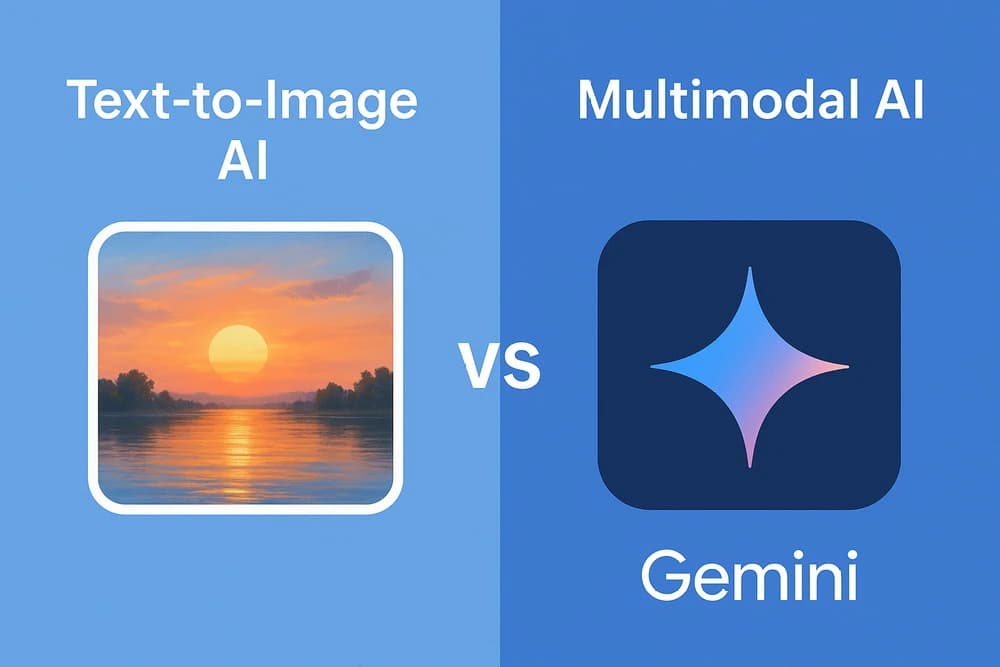Wait...Wait...Wait...
Memuat.../Tech
The Difference Between Text-to-Image AI and Multimodal AI
Salin URL

Gemini aiMeta aiChatGPT aiCopilot aiClaude aiMid JourneyLeonardoVheerStable DiffusionDALL-E

AI image generators are getting more sophisticated. From DALL·E to Vheer AI, learn about the advantages, technical strengths, and accessibility of each platform in 2025.
Copyright © 2025 Bima Akbar.
Artificial Intelligence (AI) has rapidly evolved, and today we see different categories of AI designed for specific tasks. Two of the most popular are Text-to-Image AI (such as DALL·E, MidJourney, and Stable Diffusion) and Multimodal AI (such as Google’s Gemini, OpenAI’s GPT and Anthropic’s Claude).
While both are powered by advanced machine learning, they serve very different purposes in how they process information and deliver results.
Models that transform text instructions (prompts) into images. Example: “A Van Gogh-style painting of a sunset in Paris” → instantly generates an image based on the description.
Models that can understand and generate across multiple formats: text, images, audio, and even video. For instance, Gemini can read text, analyze charts, and provide explanations in the same conversation.
Text-to-Image → Creative visualization. Turning words into pictures.
Multimodal AI → Contextual understanding. Processing and analyzing mixed inputs for deeper insights.
Text-to-Image AI → Powered by diffusion models, where an image is gradually formed from random noise into a clear visual based on the prompt.
Multimodal AI → Built on transformer-based neural networks (LLMs), trained on massive datasets of text plus multimodal sources (images, audio, code).
Quickly generates designs, illustrations, and mockups.
Supports artists and marketers as an idea generator.
Affordable alternative to stock photography.
Handles complex queries with long context.
Can analyze visuals like graphs or tables alongside text.
Useful across education, research, customer support, and productivity tools.
May produce biased or distorted results.
Quality heavily depends on prompt detail.
Copyright concerns due to training data sources.
Can hallucinate (produce inaccurate information).
Requires large computational resources.
Cannot generate high-quality images directly without integration.
Digital marketing campaigns.
Illustrations for blogs and articles.
Product mockups for e-commerce.
Intelligent customer service chatbots.
Academic research assistants.
Document, chart, and even medical image analysis.
Text-to-Image → Increasingly integrated into creative platforms like Adobe Stock.
Multimodal AI → Becoming core features in productivity ecosystems such as Google Workspace (Gemini) and Microsoft Copilot.
Text-to-Image AI and Multimodal AI serve different yet complementary purposes. While text-to-image models specialize in creative visuals, multimodal AI like Gemini excels in understanding context and analyzing multiple data formats.
In 2025, the two are converging: multimodal AI is increasingly integrated with image generation, unlocking new opportunities for creators, businesses, and researchers across Europe and the United States.